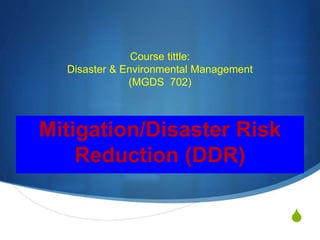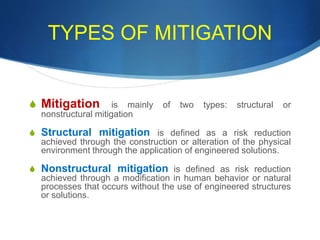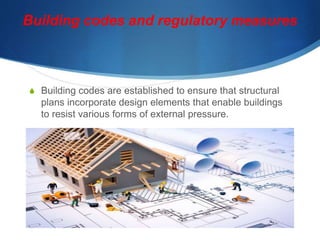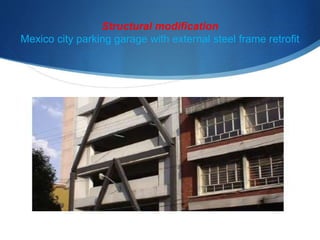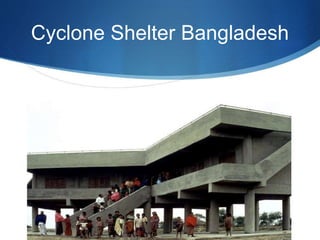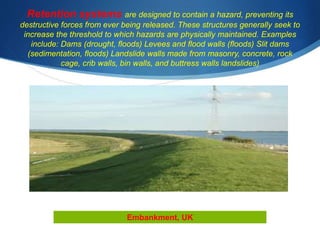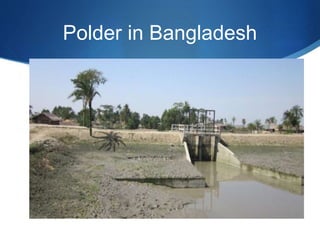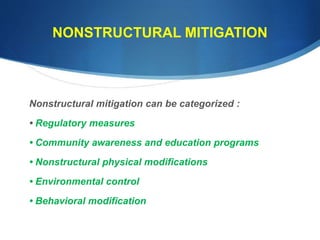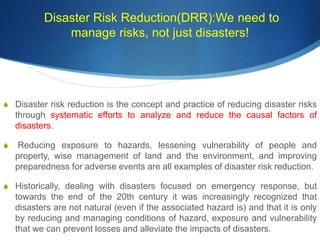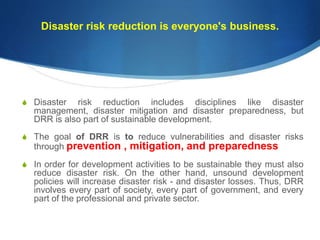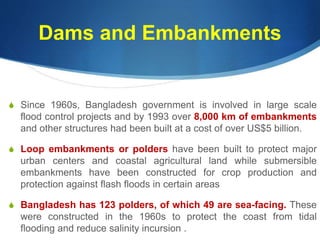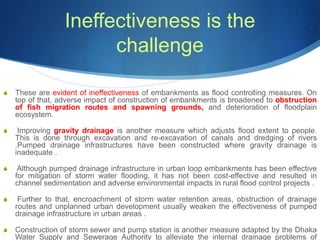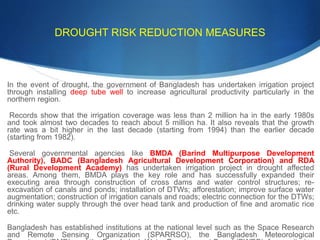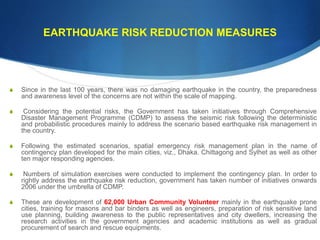The document discusses modern disaster management approaches and focuses on mitigation and disaster risk reduction. It describes the four phases of disaster management as mitigation, preparedness, response, and recovery. Mitigation, also called disaster risk reduction, aims to reduce the impacts of hazards before they occur through both structural measures like building codes and non-structural measures like education programs. The document then provides details on different types of mitigation strategies used in Bangladesh to reduce risks from floods and cyclones, including embankments, cyclone shelters, and coastal afforestation. It also discusses challenges with solely relying on structural measures and the importance of combining both structural and non-structural approaches.
